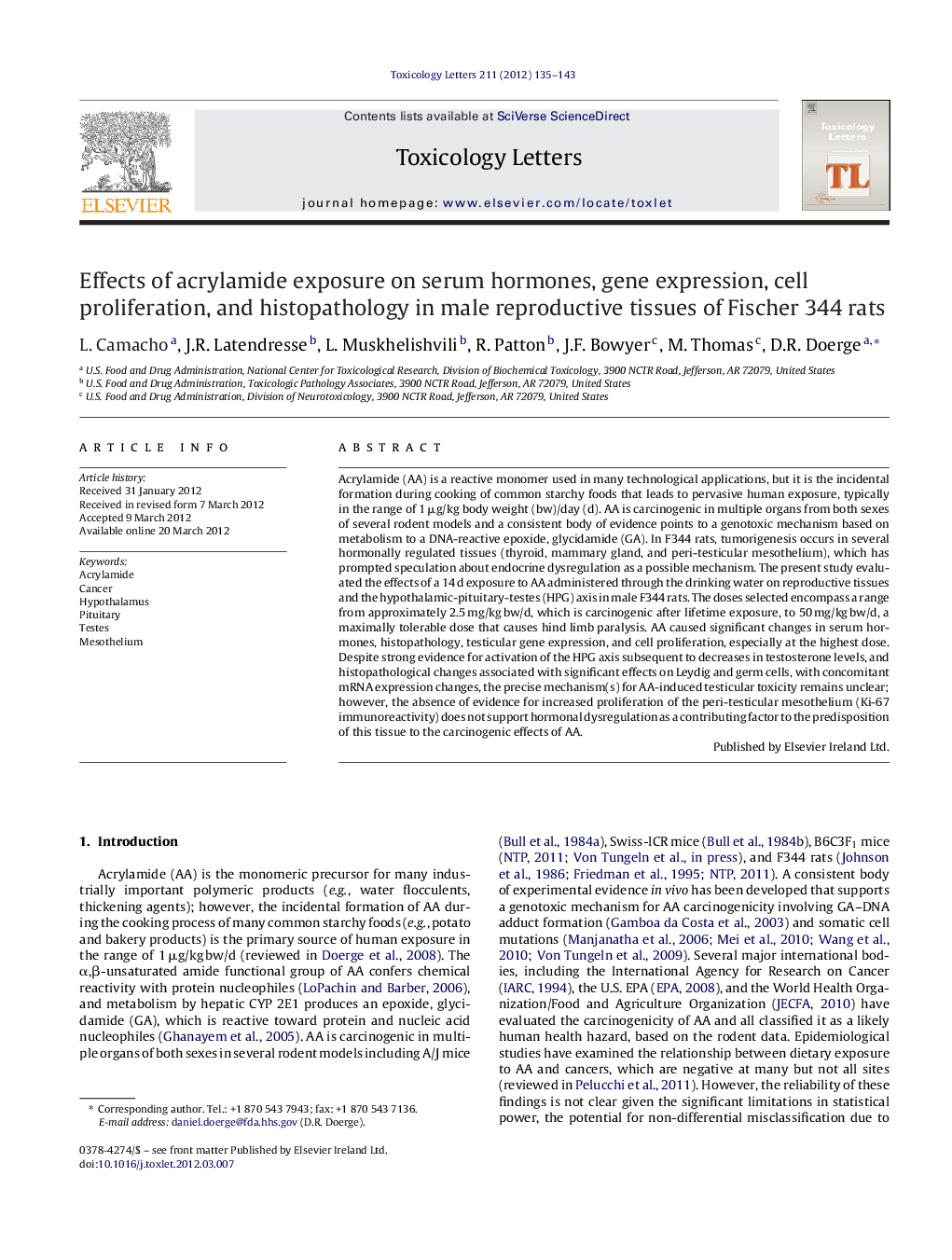| کد مقاله | کد نشریه | سال انتشار | مقاله انگلیسی | نسخه تمام متن |
|---|---|---|---|---|
| 2599583 | 1133219 | 2012 | 9 صفحه PDF | دانلود رایگان |

Acrylamide (AA) is a reactive monomer used in many technological applications, but it is the incidental formation during cooking of common starchy foods that leads to pervasive human exposure, typically in the range of 1 μg/kg body weight (bw)/day (d). AA is carcinogenic in multiple organs from both sexes of several rodent models and a consistent body of evidence points to a genotoxic mechanism based on metabolism to a DNA-reactive epoxide, glycidamide (GA). In F344 rats, tumorigenesis occurs in several hormonally regulated tissues (thyroid, mammary gland, and peri-testicular mesothelium), which has prompted speculation about endocrine dysregulation as a possible mechanism. The present study evaluated the effects of a 14 d exposure to AA administered through the drinking water on reproductive tissues and the hypothalamic-pituitary-testes (HPG) axis in male F344 rats. The doses selected encompass a range from approximately 2.5 mg/kg bw/d, which is carcinogenic after lifetime exposure, to 50 mg/kg bw/d, a maximally tolerable dose that causes hind limb paralysis. AA caused significant changes in serum hormones, histopathology, testicular gene expression, and cell proliferation, especially at the highest dose. Despite strong evidence for activation of the HPG axis subsequent to decreases in testosterone levels, and histopathological changes associated with significant effects on Leydig and germ cells, with concomitant mRNA expression changes, the precise mechanism(s) for AA-induced testicular toxicity remains unclear; however, the absence of evidence for increased proliferation of the peri-testicular mesothelium (Ki-67 immunoreactivity) does not support hormonal dysregulation as a contributing factor to the predisposition of this tissue to the carcinogenic effects of AA.
► At doses above 10 mg/kg, acrylamide treatment of male F344 rats reduced serum testosterone levels.
► At doses above 10 mg/kg, acrylamide treatment activated the HPG axis.
► A dose of 50 mg/kg acrylamide significantly altered histology of Leydig and germ cells.
► A dose of 50 mg/kg acrylamide did not alter proliferation of the peritesticular mesothelium.
► The data do not support hormonal dysregulation in the carcinogenic mechanism for acrylamide.
Journal: Toxicology Letters - Volume 211, Issue 2, 1 June 2012, Pages 135–143